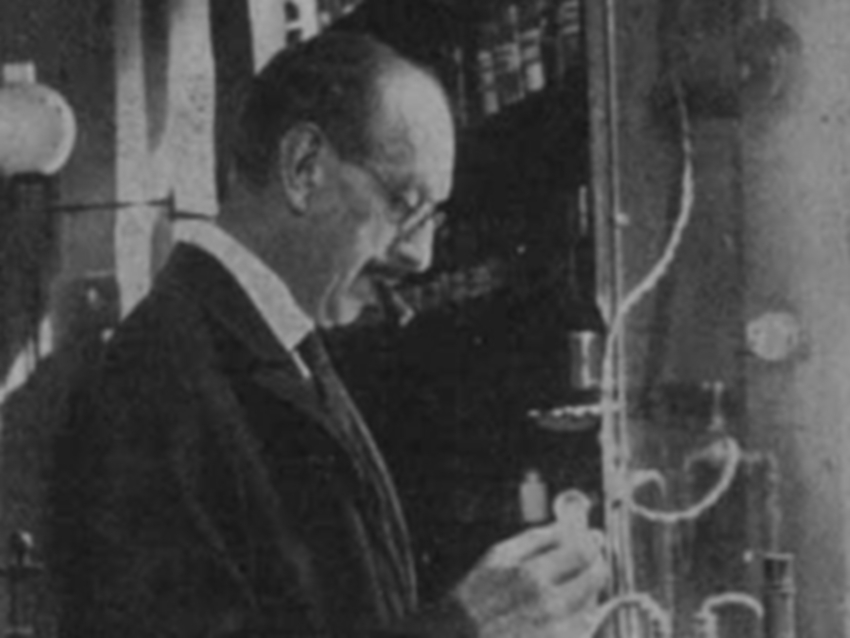Ludwig Gatterman was born on April 20, 1860, in Goslar, Germany. Starting in 1881, he studied chemistry under Robert Bunsen at the University of Leipzig, Germany, and under Carl Liebermann at the Technical University of Berlin, Germany. Gattermann started work on his Ph.D. in 1883 under the supervision of Hans Hübner at the University of Göttingen, Germany. Hübner died in 1884. Gattermann completed his Ph.D. in 1885 and then worked with Victor Meyer, Hübner’s successor and the discoverer of thiophene.
Gattermann completed his habilitation in Göttingen in 1886. In 1888, he started a decades-long collaboration with the company Friedr. Bayer & Co. (today’s Bayer AG, then a dye company), working together with the industrial chemist Carl Duisberg. Gattermann followed Victor Meyer to the University of Heidelberg, Germany, in 1889. In 1900, Gattermann joined the University of Freiburg, Germany, as Full Professor. He remained there for the rest of his career. Ludwig Gatterman died on June 20, 1920.
Gattermann made significant contributions to both organic and inorganic chemistry. He is best known for the Gattermann reaction [1], a formylation of aromatic compounds using hydrogen cyanide and hydrogen chloride. The reaction is similar to the Friedel–Crafts reaction and uses Lewis acid catalysts such as AlCl3. A variant of the reaction uses CO instead of HCN and is named the Gattermann–Koch reaction for Gattermann and Julius Arnold Koch [2].
Gattermann authored a popular German-language textbook of practical organic synthesis that was first printed in 1894 [3]. The textbook was continued up to 1982, updated by Heinrich Wieland. Gattermann’s work on inorganic chemistry included, for example, an investigation of the explosive inorganic compound nitrogen trichloride [4] and the syntheses of several silicon- and boron compounds [5].
Ludwig Gatterman is the answer to Guess the Chemist (102).
References
- [1] Synthese aromatischer Oxyaldehyde (in German),
L. Gattermann, W. Berchelmann,
Chem. Ber. 1898, 31, 1765–769.
https://doi.org/10.1002/cber.18980310281 - [2] Eine Synthese aromatischer Aldehyde (in German),
L. Gattermann, J. A. Koch,
Chem. Ber. 1897, 30, 1622–1624.
https://doi.org/10.1002/cber.18970300288 - [3] Die Praxis des organischen Chemikers (in German),
L. Gattermann,
Veit & Comp., Leipzig, 1894. - [5] Zur Kenntniss des Chlorstickstoffs (in German),
L. Gattermann,
Chem. Ber. 1888, 21, 751–757.
https://doi.org/10.1002/cber.188802101138 - [6] Untersuchungen über Silicium und Bor (in German),
L. Gattermann,
Chem. Ber. 1889, 22, 186–197.
https://doi.org/10.1002/cber.18890220141
Sources
- Ludwig Gattermann † (in German),
E. Fromm,
Angew. Chem. 1920, 33, 185.
https://doi.org/10.1002/ange.19200336002 - Nekrolog: Ludwig Gattermann (in German),
Paul Jacobson,
Chem. Ber. 1921, 54, A115–A141.
https://doi.org/10.1002/cber.19210540628
Also of Interest
- 150th Birthday: Emil Knoevenagel,
ChemViews Mag. 2015.
Inventor of the eponymous aldol condensation




